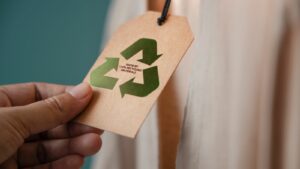In the world of style and glamour, a new trend is taking center stage – sustainable fashion. It’s more than just a buzzword or a passing fad, it’s a movement that’s redefining the industry and changing the way we think about our clothes. But what exactly does ‘sustainable fashion’ mean?
This term might seem complex, but it’s actually quite simple. It’s about designing, producing, and consuming clothes that respect our planet and its inhabitants. From the materials used to the working conditions in factories, every aspect of the process is considered. So, let’s delve deeper into the world of sustainable fashion and understand its true meaning.
Sustainable Fashion Meaning

Sustainable fashion, often synonymous with eco-fashion, implies an innovative approach that favors ecological integrity and social welfare. This comprehensive concept extends from the design phase, prioritizing durable materials and aesthetics, and right through production, advocating for less hazardous industrial processes. Practices may include recycling apparels, reducing waste, and minimizing energy consumption.
It’s also crucial to note that economic and social sustainability play key roles in this novel fashion trend. Fair labor policies, ethical production and trade, and respect for artisans’ skills bear equal importance in the context of sustainable fashion. Essentially, the idea revolves around a holistic ‘cradle-to-cradle’ lifecycle, involving a balanced symbiosis of environmental, economic, and societal aspects of the garments we wear.
Furthermore, sustainable fashion encompasses a change in consumer behavior. This includes favoring quality over quantity, being mindful of how often one buys, and considering the lifetime of pieces in their wardrobe. As such, sustainable fashion presents a paradigm shift in how we approach fashion overall. The purpose is to create a harmonious ecosystem where conscience is as valued as couture.
Ethical Production Processes

Ethical production processes act as pillars for sustainable fashion, holding critical importance in the achievement of eco-fashion goals. They revolve around the usage of non-hazardous materials and techniques, treating laborers fairly, and emphasizing transparency in production lines.
A key aspect, responsible sourcing, involves ensuring materials derive from companies that protect the environment and respect workers’ rights. Also paramount is maintaining fair labor practices, providing workers with a safe working environment, adequate salaries, and respecting their rights.
Lastly, transparency plays a critical role. Being open about every step in the production process reassures consumers that their apparel is indeed sustainably made, enhancing their trust and increasing brand credibility.
Use of Eco-Friendly Materials

Optimally utilizing eco-friendly materials stands as a central tenet in the realm of sustainable fashion. They, in essence, are materials that have minimal environmental repercussions, both in their growth and processing. For instance, organic cotton trumps conventional cotton because it eschews harmful pesticides during cultivation. Similarly, linen and hemp are the production result of fast-growing, low-impact plants.
Adjusting focus to the synthetic front, lyocell serves as a prime exemplar. This biodegradable material, contra others of its kind, is born in closed-loop systems, reusing solvents and conserving resources. In tandem with the choice of such materials, forging robust recycling channels, as seen in Patagonia’s Worn Wear initiative, strengthens the resolve towards sustainable fashion, reducing overall waste.
Challenges Facing Sustainable Fashion
Sustainable fashion’s journey isn’t without hurdles. It’s grappling with issues like high production costs, consumer awareness, and the complex nature of supply chains. Eco-fashion’s higher price tag can deter consumers used to fast fashion’s low-cost allure. Raising awareness about sustainable fashion’s long-term benefits is therefore vital. Also, transparency in supply chains is a tough nut to crack. It’s a multifaceted issue requiring cooperation from all stakeholders – from raw material suppliers to end consumers. Despite these challenges, the movement towards sustainable fashion is gaining momentum. It’s a testament to the industry’s resilience and commitment to a greener, fairer world. So, while sustainable fashion may seem like an uphill battle, it’s one worth fighting for. The planet and its people stand to benefit immensely from this shift in mindset and practice.

